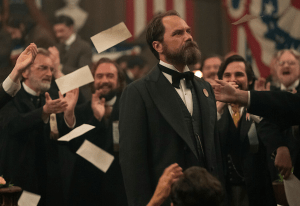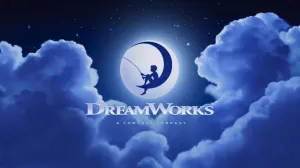The release of Star Wars: The Rise of Skywalker is drawing near, and it’s safe to say that fans are eager and anxious to see how the Skywalker Saga comes to a close. One of the things that has been most speculated-about is the endgame of Leia Organa (Carrie Fisher), who appears in the film through previously-unused archival footage from Star Wars: The Force Awakens. Following Fisher’s sudden passing in 2016, her final on-screen appearance as Leia in The Rise of Skywalker is sure to court an array of emotions, but, to an extent, fans already got a cathartic and truly magical moment — which honors Fisher’s legacy both on and off the screen — in Star Wars: The Last Jedi.
Videos by ComicBook.com
Yes, we’re talking about the “Flying Leia” scene, the moment that courted confusion and an absurd amount of backlash almost from the second The Last Jedi was released. The scene, which occurs around one-third of the way through the film, saw the Resistance’s ship being targeted by Kylo Ren (Adam Driver) and the First Order, resulting in the ship’s bridge being blown to smithereens. While everyone else on the bridge had been killed, Leia soon was seen floating in the vacuum of space. Using her Force abilities, Leia was able to float her body back towards the ship, where she was rescued and hospitalized. Some called the scene absurd and Mary Poppins-esque, while others argued that it was a bizarre take on Fisher’s death (despite the fact that Fisher filmed the scene before her passing). While the scene definitely has a jarring quality to it (especially when combined with the real-life circumstances), that only helps make it a more impactful moment.
One recurring critique was the fact that Leia could even use the Force to survive deep space, something that seemed relatively unprecedented in the franchise. For one thing, this isn’t the first time that this ability has been used in the canonical Star Wars universe, with Kanan doing something very similar after being thrown into space in a Season Three episode of Star Wars Rebels. One of the biggest pluses of the Force is the fact that it doesn’t really have a definite set of rules. Sure, there are guidebooks and sacred texts about how to best harness the Force, but the actual application of the ability seems to grow and evolve as a Force user needs it to. With that in mind, the idea that a Force user would be able to propel themselves through deep space to safety doesn’t seem far-fetched.
There’s also the notion of what that moment — of using her Force abilities in such a physical and significant way — means to Leia. In the official material that covers the decades between the original and sequel trilogies, it’s abundantly clear that Leia did not embrace her connection to the Force as dramatically as Luke Skywalker (Mark Hamill), and chose instead to focus more on being a politician in the New Republic. While she didn’t necessarily completely “close herself off” from the Force, Leia clearly had complicated feelings about the role it played in the legacy of her family and her father. Seeing Leia overcome that dichotomy in such a physical and headstrong way — and through something that’s much more unique than wielding a lightsaber — is incredibly moving.
Even though the flying scene itself is nearly silent, the significance of the scene within the overall plot of The Last Jedi can definitely be felt. The second issue of Gary Whitta and Michael Walsh’s The Last Jedi comic adaptation dives more into Leia’s internal monologue during that scene and creates something truly awesome in the process. Leia questions if, after “a lifetime spent fighting, resisting, and surviving,” this will really be the end of her, before quickly realizing that it won’t be. The junior novel of The Last Jedi expands on the moment in a completely different context, pointing out that Leia returns to the ship in part so the Resistance can have her tracking beacon to Rey (Daisy Ridley) and Luke. While some will probably argue that these are retroactive attempts to give the scene more significance, they are also elements that can be easily interpreted from the subtext of the scene.
In addition to the canonical significance of it all, the flying scene unintentionally serves as a mirror for Fisher’s impact on the Star Wars fandom. For multiple generations of fans — especially girls and young women — Leia Organa is a touchstone for female representation in genre media. As Amilyn Holdo (Laura Dern) flat-out says in another Last Jedi scene, she knows how to persevere through any challenge or loss in life because Leia “taught her how.” For those who have looked up to Fisher’s off-screen work as an author, screenwriter, and mental health advocate, those words rang true in a whole other way. Both Fisher and her portrayal of Leia have inspired fans to, as she once said, “Stay afraid, but do it anyway,” something that arguably is physically manifested in the flying scene.
For some, The Last Jedi‘s “Flying Leia” scene comes across as a surreal and awkward interlude, or one of countless examples as to why the Star Wars franchise has “jumped the shark.” But beyond the surface, the scene is so much more. Within the span of less than a minute, the scene manages to be an integral turning point for the plot, a payoff to decades of character development, and a manifestation of the legacy that Carrie Fisher has left on and off the screen. Admittedly, the scene might be a little jarring at first, but maybe that’s a good thing. In a world where several Supermen have inspired audiences by flying across the big screen, getting to see one of science fiction’s most significant female characters do the same feels like something worth celebrating.
Star Wars: The Rise of Skywalker lands in theaters on December 20th.

Welcome to Star Wars Week! ComicBook.com is celebrating the release of Star Wars: The Rise of Skywalker all week long with an in-depth look at the last four decades spent in the galaxy. Click on the banner to see more of our exclusive coverage and videos celebrating all things Star Wars!








